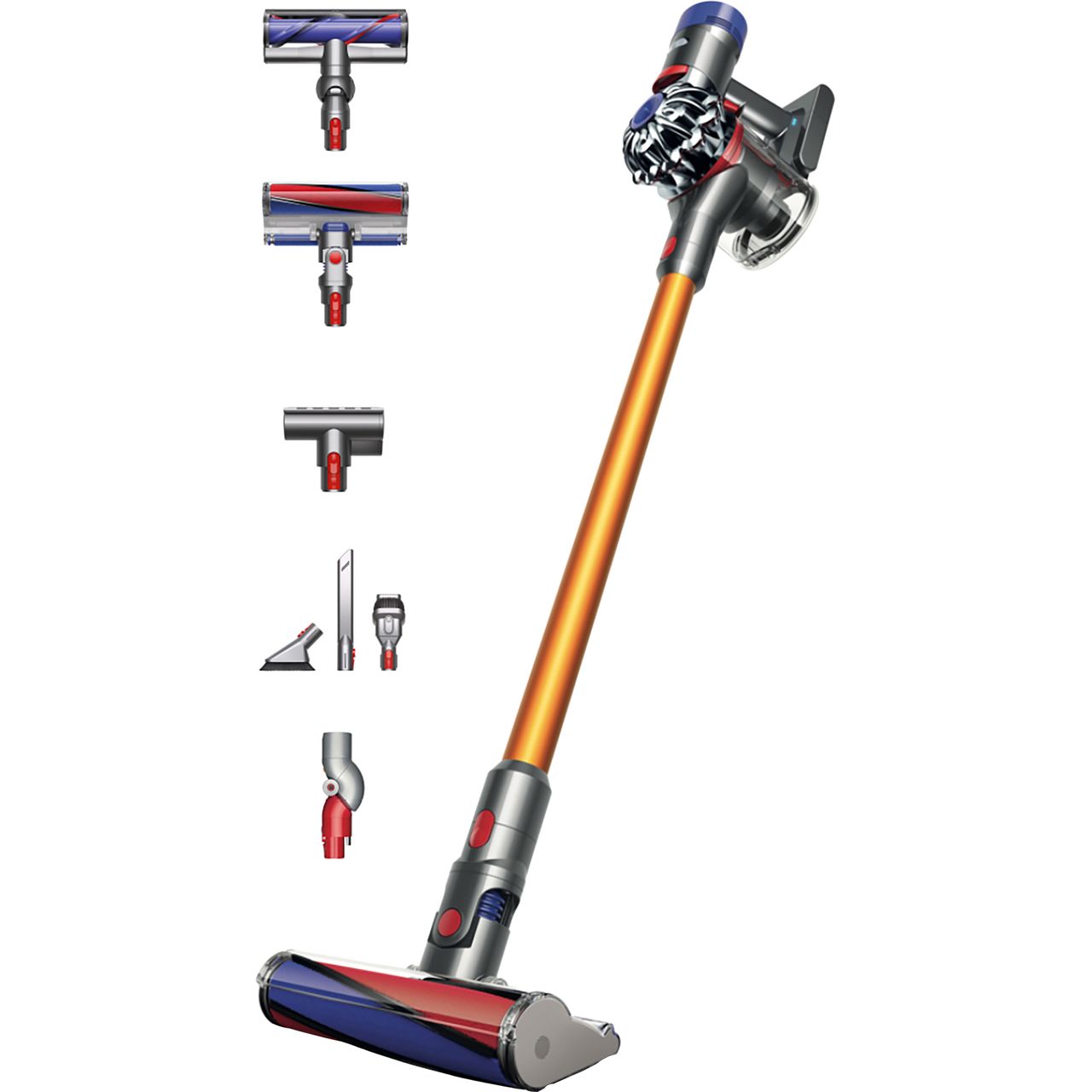Dyson V7 Motorhead Cordless Vacuum – 5179374
Engineered for powerful suction on carpets and hard floors. Up to 30 minutes of fade-free suction. 2 Tier Radial cyclones create strong centrifugal forces, to capture more dirt.
The Dyson V7 Motorhead has been engineered to deliver up to 30 minutes of powerful, fade-free suction on carpets and hard floors. You’ll be able to switch between Max mode for up to 7 minutes of high power, and Powerful mode for longer, day-to-day cleaning, backed by 2 Tier Radial cyclones that capture more dirt. The lightweight and ergonomic design allows you to clean hard to reach, high-up places with ease, while the docking station tidily stores and recharges your vacuum, so it’s always ready to use. When you’re done, there’s no need to get your hands dirty – simply pull the lever to release dust and debris straight into your bin.
What’s in the box?
- Dyson V7 Motorhead
- Direct drive cleaner head
- Combination tool
- Crevice tool
- Docking station
Features:
- Powered by the Dyson digital motor V7
- Engineered for powerful suction on carpets and hard floors
- Up to 30 minutes of fade-free suction
- Two power modes:
- Max mode for up to 7 minutes of high power
- Powerful mode for longer, day-to-day cleaning
- 2 Tier Radial cyclones create strong centrifugal forces, to capture more dirt
- Docking station stores and recharges
- Lightweight and ergonomic to clean high-up places
- Hygienic no-touch dirt emptying
Specifications:
- Colour: Nickel/Red
- Run time: 30 mins
- Charge time: 3.5 hours
- Bin capacity: 0.54L
- Dimensions (approx. cm): 124.3 x 25 x 21
- Weight (approx.): 2.4kg
- 2-YEAR MANUFACTURER WARRANTY
Additional information
| Dimensions (approx. cm): | 124.3 x 25 x 21 |
|---|---|
| Weight (approx.) | 2.4kg |





by Melissa
Best vacuum ever. Sucks so much up and works beautifully on all surfaces including long pile and cut pile carpets. Holds charge for ages and I can do the whole house easily. Really light to carry and easy to put together. LOVE LOVE LOVE
by Terry
Vacuum works so well, the charge time is quite long but if you sit it on charge all the time there’s no issues. Big power and suction, easy to use. Recommend everyone gets one.